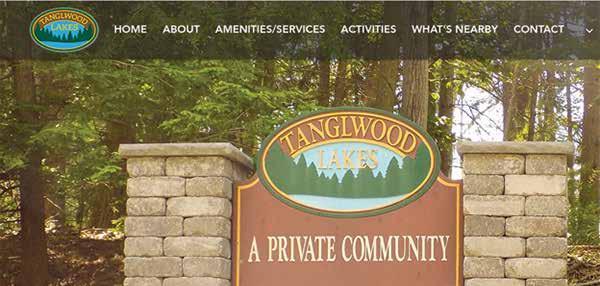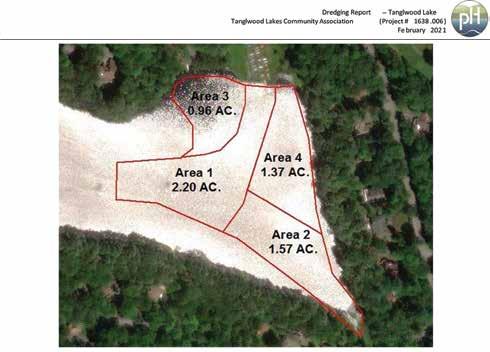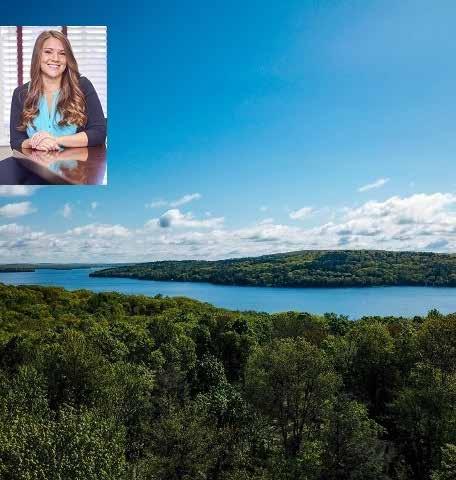
4 minute read
All About the Birds and the Bees
Remember in grade school science when we learned about the balance of nature and what was called the Ecosystem? Here in Tanglwood Lakes our particular biome of hardwood and evergreen trees, lakes, ponds, streams, meadows, forests, and wildlife gives us a front row seat to view and experience the interdependency within our surroundings.
Spring, when we are awakening to a new season and shedding the sleep and cobwebs of winter, has a few noteworthy environmental calendar occasions. These include Arbor Day, and Migratory Bird Day.
Advertisement
Arbor Day
Arbor Day is a time set aside to encourage the planting of trees, to gain a greater appreciation and knowledge of trees, and to highlight the vital role of trees in our lives. The original developers of Tanglwood Lakes were especially respectful of nature and set up protective environmental policies. In Pennsylvania, the Commonwealth is involved in the “Keystone 10 Million Trees Partnership” (www.tenmilliontrees.org). The Keystone 10 Million Trees Partnership is a collaborative effort of national, regional, state and local agencies, conservation organizations, outdoor enthusiasts, businesses, and citizens committed to improving Pennsylvania’s communities, economy, and ecology by planting 10 million trees throughout the Commonwealth. Trees are critical to life and our good health. This partnership prioritizes the restoration and preservation of trees along streams, streets, and roadways. Trees cleanse the air and sources of drinking water. They provide cooling shade for buildings, playgrounds, and parks during the heat of summer. Enter Tanglwood Lakes from the highway and you immediately feel the temperature drop by about 6 or 7 degrees.
How can we help? According to George Weigel’s article (www.pennlive.com) Arbor Day, which this year falls on Friday. April 30, is a perfect time for planning trees. The added benefit to planting trees and shrubs is in aiding birds, bees and other local wildlife as a way to preserve the natural habitat. If you’re thinking about adding a tree or two this spring and want to go native, here are 10 worthy choices:
American fringe tree (Chionanthus virginicus); River birch (Betula nigra); Blackgum ‘Wildfire’ (Nyssa sylvatica ‘Wildfire’); American dogwood (Cornus florida); Sweetbay magnolia (Magnolia virginiana); Serviceberry (Amelanchier x grandiflora); Red maple (Acer rubrum); Red oak or white oak (Quercus rubra or Quercus alba); American hornbeam (Carpinus caroliniana); (10) Redbud (Cercis canadensis) Seek the advice of a local garden center for planting, soil conditions, and other details to make your selection.
Migratory Bird Day
(source: www.migratorybirdday.org)
International Migratory Bird Day was created in 1993 through the Smithsonian Migratory Bird Center. From 1995 to 2006 the program was under the direction of the National Fish and Wildlife Foundation. Today it is has a home with the Environment for the Americas, a non-profit organization that connects people to bird conservation. They educate the public by focusing on such topics as the habitats birds need to survive, birds and the ecosystem services they provide, the impacts of climate change on birds, and the laws, acts, and conventions that protect birds.
The group recognizes the time in the first two weeks of May as opportune to observe birds in their migratory behaviors as they stop to rest and refuel in locations in the western hemisphere. The reverse holds for the time in October to view bird migration.
Local bird watchers in the Tanglwood area are listening for distinct calls and flashes of color during this time of the year. Birds, along with bees and other flying insects, are a valuable part of preserving our environment. These critters are often referred to as natural pollinators. According to an article written by Brianna Randall ( www. farmers.gov ) pollinators add value for people and wildlife. Going outside on a Spring morning you can see and hear a vast army of birds and bees at work. More than 80 percent of the world’s flowering plants need a pollinator to reproduce; and we need pollinators too, since most of our food comes from flowering plants. One out of every three bites of our food, including fruits, vegetables, chocolate, coffee, nuts, and spices, is created with the help of pollinators. Pollinators are also a key part of the food web. Insects, like moths, feed more than 80 percent of birds in the U.S., as well as reptiles, amphibians, and mammals. Plus, pollinators contribute to healthy soils and clean water by fostering robust plant communities.
We can all do our part to keep the ecology of Tanglwood Lakes healthy and rich by planting trees, shrubs, and flowers to encourage the birds and the bees to take up residence in our area.
Here is a chart to guide you in selecting plants for the birds and the bees.
(www.hannahrosegreen.com) See illustrated chart below:












